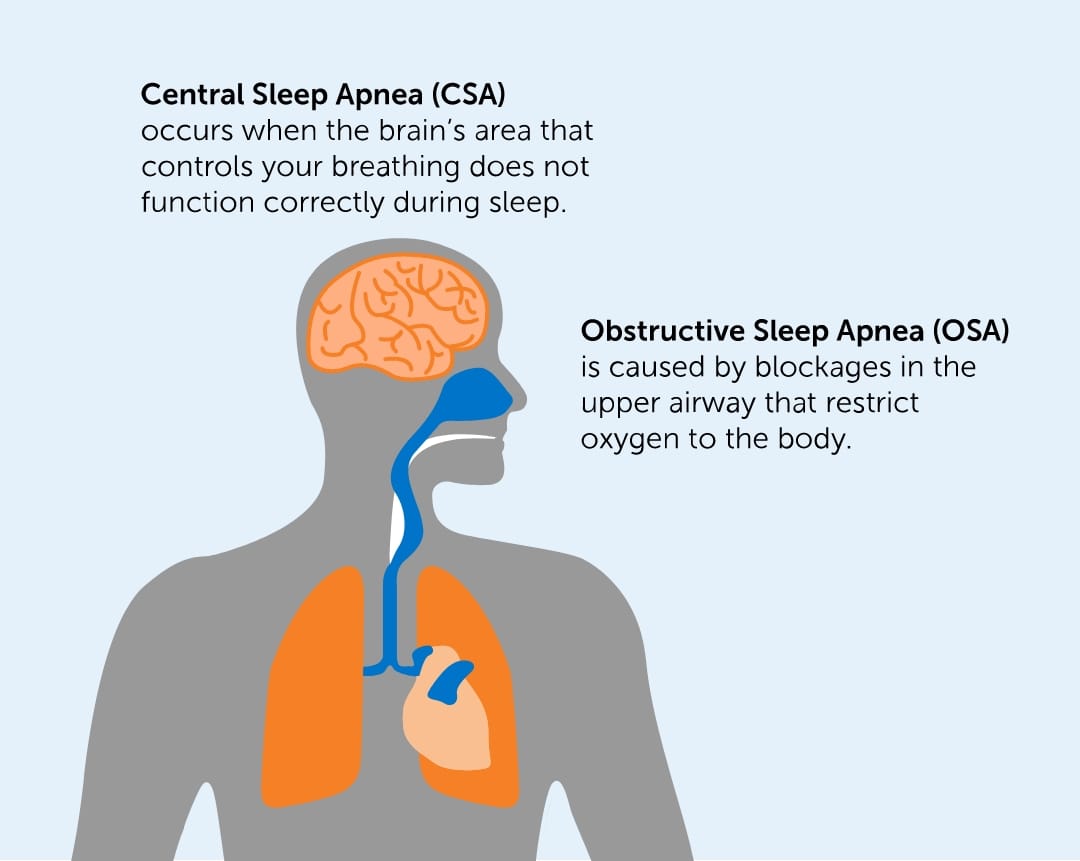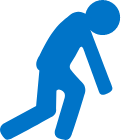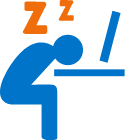
SLEEP
INTERRUPTED
Central Sleep Apnea
Sleep apnea is a disorder where breathing is repeatedly interrupted while asleep. Sleep apnea is classified as either Obstructive Sleep Apnea (OSA) or Central Sleep Apnea (CSA).
CSA is a form of sleep apnea that is less common and less studied than OSA. Whereas OSA results from a blockage of the upper airway, CSA occurs when the brain fails to send appropriate signals to the breathing muscles to stimulate a regular breathing pattern.1

Symptoms of Central Sleep Apnea
Central Sleep Apnea has symptoms that are both long term and short term.
Symptoms of central sleep apnea include:2-3

Chronic fatigue

Excessive daytime sleepiness
Brain fog / cognitive impairment
Inability to fall asleep
or get restful sleep
Many patients with CSA also have heart disease, especially heart failure.4 Within this population, patients with CSA are at increased risk for hospitalizations and even death.5,6
Central sleep apnea has a number of known associations:2
- Cardiac disorders including Congestive Heart Failure (CHF) and Atrial Fibrillation (AFib)
- High altitude
- Opioids
- Idiopathic central sleep apnea
- Other medical conditions (stroke, brainstem/spinal cord disorders)
Diagnosing CSA
CSA is diagnosed via a home or in-lab sleep study, that is prescribed by a physician to determine if a patient has sleep apnea and if their primary type of apnea is central or obstructive.
Home Sleep Apnea Test
(HSAT, Polygram, PG)
Completed at home
Measures oxygen, air flow and movement of the chest and abdomen*
In-Lab Sleep Study
(Polysomnogram, PSG)
Assesses sleep stage and other sleep disorders in addition to sleep apnea
Requires overnight monitoring in a sleep lab
During the sleep study, the number of apnea and hypopnea events per hour are counted and reported as the Apnea Hypopnea Index (AHI), the most common measure of severity of sleep apnea.

